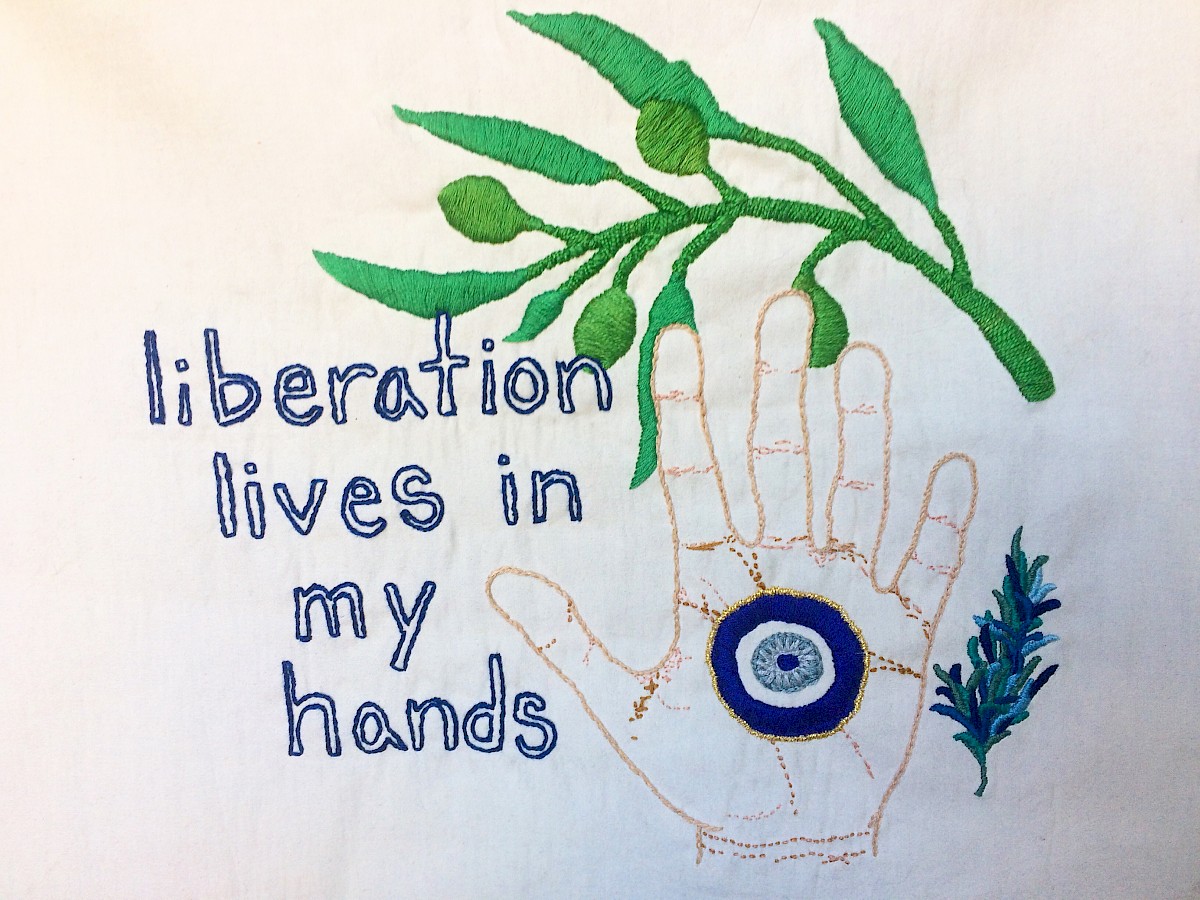iele paloumpis

Iele paloumpis’ work explores being in-between worlds. As a queer, trans, disabled dance artist and death doula, they are pulled toward liminal spaces as sites of trauma, healing, loss, growth, evolution, uprising, spirituality, and things we cannot name. These are the spaces they hope to excavate through creative work.
They create dances to speak to communities and make space for those of us deemed unworthy by systems of oppression. Central to paloumpis’ artistic practice is desire for complexity, communal interdependence, care, and empowerment – an armor and balm for spirits as they navigate generations of political violence.
paloumpis’ newest dance work explores loss through the lenses of historical violence and disability justice. With vocalization, poetic audio description and tactile set design, the piece will become an immersive sensory landscape, centering the experiences of visually impaired audiences by creating an environment that reflects and enhances the dancing.
Their research spans studies in psychology, spirituality, epigenetics, and somatics. With a cast of four dancers, improvisational scores reveal deep physiological patterns held within our bodies. Collectively, the performers are interested in intergenerational resilience, which focuses on tools passed down from generation to generation as humans adapt. As a mixed cast of disabled and non-disabled dancers of various ancestral backgrounds and embodied relationships to queerness, they seek to energetically transform inherited wounds. It’s important to note these are conceptual artistic inquiries, not ‘rehabilitative’ in nature, which is often misconstrued when engaging with the work of disabled art-makers. Thematically speaking, paloumpis is interested in how bodies evolve after impairment or grief.
paloumpis is working with another visually-impaired dancer as part of the cast, Krishna Washburn. She and the artist discuss the shortcomings of accessible dance performance for visually-impaired audiences. Audio description is often dry, and sometimes misses the point of why dancers are doing what they’re doing.
Their research will offer new modes of conveying the poetics of dance to blind and visually-impaired audiences. Thus far, they have explored orientation through recorded and live sound, allowing audience members to touch their clothing made from textured fabrics, and experiments with aromatherapy. They’ve developed a bodywork practice using vocalization to express internal vibrations sensed through touch. Movement has then been generated by recording those bodywork sessions and improvising to the audio. During showings, bodywork is offered in real-time, so audiences can viscerally experience it for themselves, and dancers can improvise to the live sound.